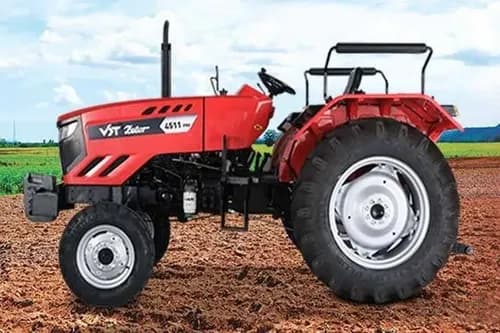Ad
Ad
Grape Production in India
The major grape-producing states in India include Maharashtra, Karnataka, Tamil Nadu, Andhra Pradesh, and Telangana. In this article, we will discuss Grape Production in India and grape farming in India.

Grapes, one of the oldest cultivated fruits, have gained significant importance in India's agricultural landscape. With a rich history of grape cultivation, the country has emerged as a prominent player in global grape production. In this article, we will discuss Grape Production in India and grape farming in India.
Grape Production in India
Grapes are grown in India in moderate to warm regions because hot and dry climates are ideal for grape cultivation. Indian grapes come in varied characteristics, including coloured, white, seeded, unseeded, large and small berries.
More than 20 varieties are under cultivation in India, but only a dozen are commercially grown. They can be grouped under the following 4 categories, based on colour and seeds: coloured-seeded, coloured seedless, white-seeded, and white seedless.
The major grape-producing states in India include Maharashtra, Karnataka, Tamil Nadu, Andhra Pradesh, and Telangana. Maharashtra, particularly the Nashik district, stands out as the leading grape-producing region, contributing significantly to the overall production in the country.
Maharashtra ranks first in terms of production accounting for more than 70% of total production and the highest productivity in the country during 2021-22. Karnataka is the second largest producer of grapes with a share of 25% in 2021-22.
The area under grapes in India is 79.6 thousand hectares with an annual production of 1878.3 thousand metric tonnes. Most of the area of grape cultivation is in Maharashtra, Andhra Pradesh, Karnataka, and Tamil Nadu. Punjab occupies an area of 777 hectares with an annual production of 22088 metric tonnes.
India is also a major exporter of fresh grapes to the world. The country has exported 267,950.39 metric tonnes of grapes to the world, worth Rs. 2,543.42 crores/ 313.70 USD Million during the year 2022-23. Major export destinations include the Netherlands, Bangladesh, the United Arab Emirates, the United Kingdom, and Russia.
Also Read: Onion Production: A Comprehensive Guide to Onion Farming
Grapes Production In India State Wise
Maharashtra: Maharashtra comes number one in grape production in India, with Nashik being the grape bowl of India. The region's favourable climate and soil conditions make it ideal for growing grapes.
Nashik, often termed the "Wine Capital of India," is a frontrunner in grape cultivation. The region's moderate climate, fertile soil, and availability of water from the Godavari River provide an ideal environment for grape farming in India. Both table grapes and wine grapes flourish in Nashik, contributing significantly to India's grape output.
Karnataka: The Bijapur, Bagalkot, and Gulbarga districts in Karnataka contribute significantly to the state's grape production. The climate in these regions is perfect for the cultivation of both table and wine grapes.
Tamil Nadu: The districts of Krishnagiri and Dharmapuri in Tamil Nadu are known for their grape cultivation. The state has seen a steady increase in grape production in recent years.
Andhra Pradesh and Telangana: These states are emerging as important grape-producing regions, with the Anantapur district in Andhra Pradesh and the Nalgonda district in Telangana playing key roles.
Grape Farming In India
The grape is the world's primary fruit crop. It is designed to prepare wines and raisins for use as table fresh fruit. Grapes have the scientific name Vitis and are members of the Vitaceae family. Grape production is believed to have begun near the Caspian Sea; Indians are familiar with grapes from Roman occasions.
Grapes are grown on around 40,000 hectares in India, primarily in Maharashtra, Karnataka, Andhra Pradesh, and Tamil Nadu. Maharashtra is the most prominent grape-growing state in India.
Grape farming is the most profitable crop in India. Grape farming is also known as Viticulture. Grapes are typically produced in India from October to January. Spring is the grape season because it is favourable for grape cultivation in India.
Grapes are occasionally planted in June and July when the rainstorms are late. Monsoon planting is avoided primarily to prevent diseases in grapes.
Trenches were dug in the N-S direction for planting. The width of the tranches could range from 60 to 75 cm. The ditches were then filled with FYM, natural fertilizers, natural mixes, neem cakes, and other organic materials.
Plant separation is maintained by taking into account the type of soil, variety, and preparation plan. The spacing between two columns might be 2 to 3 m, while the distance between plants inside a line will be half that, allowing for 2000 to 5000 plants per hectare.
Types of Grapes Cultivated in India
Thompson Seedless: Thompson Seedless is one of the most popular table grape varieties in India. These grapes are known for their sweet and seedless berries. It is widely grown in Nashik and other grape-producing regions.
Anab-e-Shahi: This variety, characterized by large, black, and oval-shaped berries, is cultivated in various states, including Karnataka, Maharashtra, and Andhra Pradesh.
Bangalore Blue: These are mainly grown in Karnataka. Bangalore Blue grapes are known for their distinct taste and are often used for making raisins.
Irrigation System for Grape farming
Grape farming is entirely hydrated, has a long harvest period and is consistently irrigated. A flood water system maintains an interval of 5-7 days during the summer, 8-10 days during the winter, and 15-20 days during the windy season, whereas a water system maintains an interval of 40-50 L; 30-40, 20-30 L of water per plant, water applied.
Harvesting Procedure in Grape Farming
Plants in North India begin bearing fruit after two years of cultivation. Berries of early cultivars begin to ripen by the end of May. Most types, however, are harvested when they change colour around the tip and become sweet.
Broken, rotten, distorted and undersized berries were removed one day before picking. When the temperature is above 200 °C, the bunches are frequently harvested in the early hours.
Grape Production in India varies according to climate, variety, and other factors. The standard Bangalore Blue and Anab-e-Shahi cultivars yield 40-50 t/ha, whereas seedless varieties give 20 t/ha. The typical yield is 20-25 t/ha, which is considered satisfactory.
Also Read: Vegetable Farm: A Guide To Organic Vegetable Farming
Conclusion
Grape production in India has evolved into a dynamic and thriving industry, contributing significantly to the country's agricultural economy. With the right combination of climate, soil, and technology, Indian farmers continue to produce high-quality grapes that meet both domestic and international demands.
Features & Articles
Comprehensive Guide to Tractor Transmission System: Types, Functions, and Future Innovations
Learn about tractor transmission types, components, functions, and selection factors to enhance efficiency, performance, and agricultural productivity....
12-Mar-25 09:14 AM
Read Full NewsModern Tractors and Precision Farming: Transforming Agriculture for Sustainability
Precision farming enhances agriculture by integrating GPS, AI, and modern tractors for sustainable, efficient, and productive farming practices in India....
05-Feb-25 11:57 AM
Read Full NewsTop 10 Tractors Under 30 HP in India 2025: Guide
Top 10 tractors under 30 HP in India offer efficiency, affordability, and power, ideal for small farms with diverse agricultural needs....
03-Feb-25 01:17 PM
Read Full NewsNew Holland 3630 TX Super Plus vs Farmtrac 60 PowerMaxx: Detailed Comparison
Compare New Holland 3630 and Farmtrac 60 tractors by specs, price, and features to find the perfect fit for your farm....
15-Jan-25 12:23 PM
Read Full NewsSwaraj 735 FE Vs Eicher 380 2WD Prima G3: Detailed Comparison
The Swaraj 735 FE and Eicher 380 2WD Prima G3 are reliable, powerful tractors suited for various farming tasks....
14-Jan-25 09:41 AM
Read Full NewsHow to Choose the Perfect Tractor for Your Farm: A Comprehensive Guide
Choose the right tractor by assessing farm needs, horsepower, efficiency, comfort, and budget to enhance productivity and savings....
09-Jan-25 09:43 AM
Read Full NewsAd
Ad
As featured on:


Registered Office Address
Delente Technologies Pvt. Ltd.
M3M Cosmopolitan, 12th Cosmopolitan,
Golf Course Ext Rd, Sector 66, Gurugram, Haryana
pincode - 122002

























